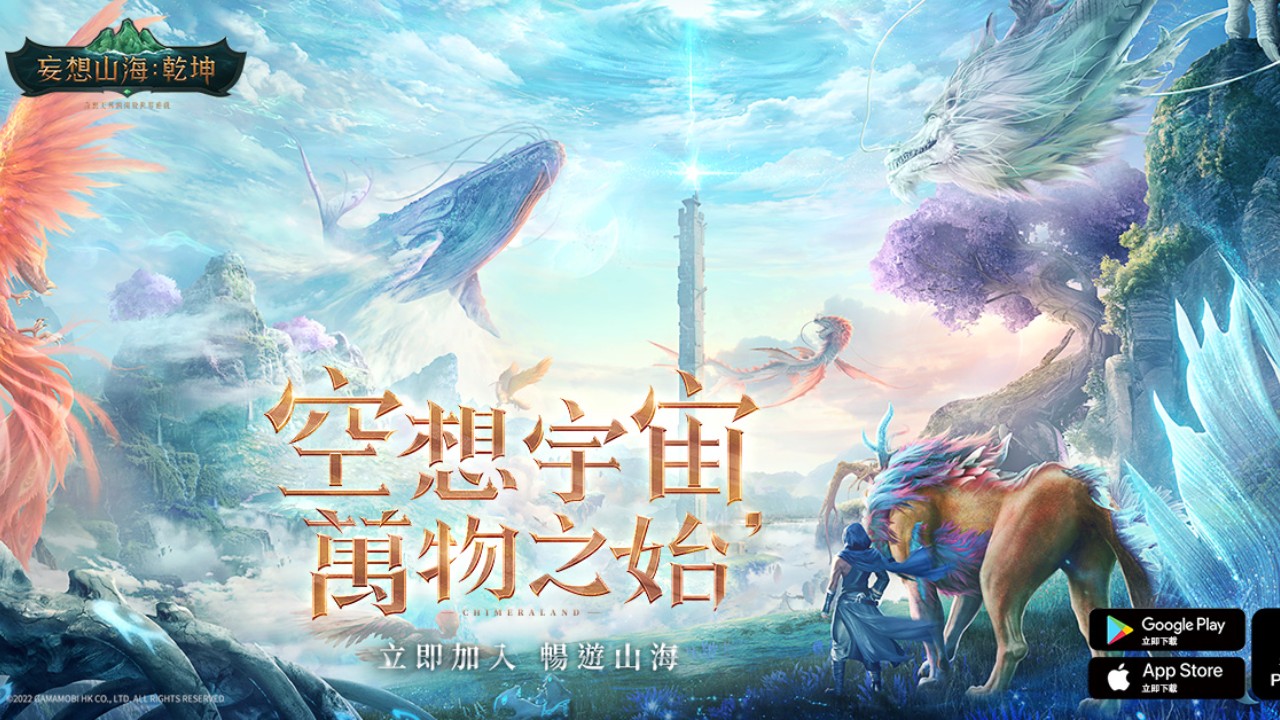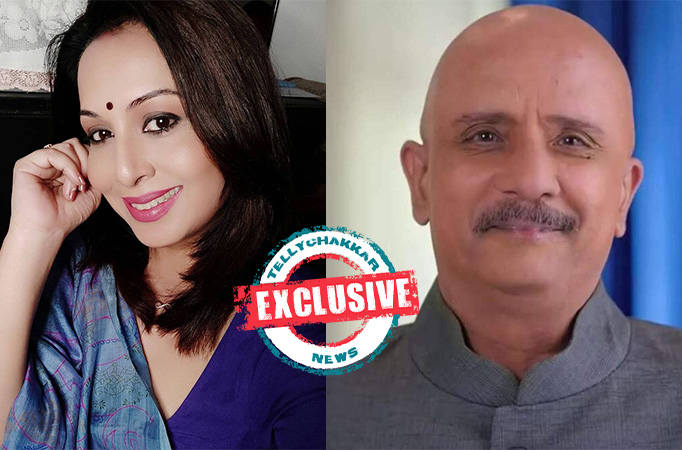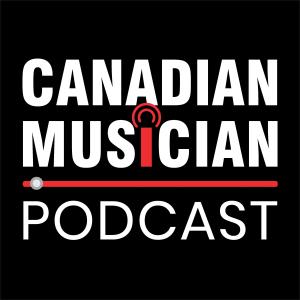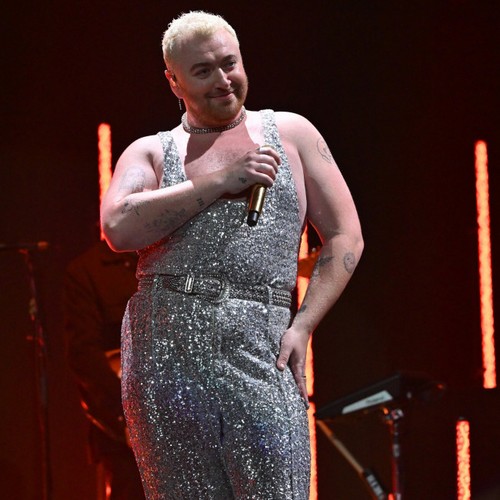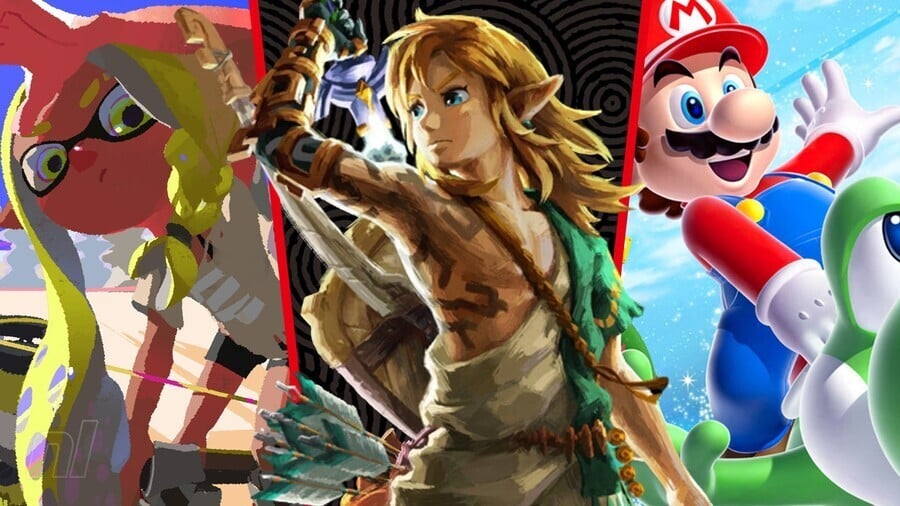
Soapbox features enable our individual writers and contributors to voice their opinions on hot topics and random stuff they’ve been chewing over.
Todayin response to the disappointment among some Zelda fans who (from what we’ve seen so far) think Tears of the Kingdom is looking too similar to BOTW, Alana looks back on some past instances when Nintendo returned for a second pass…
We’ve known pretty much since the first trailer that The Legend of Zelda: Tears of the Kingdom is going to be more Breath of the Wild. It wasn’t said outright, but the similar visual style coupled with its very early name — ‘The Sequel to The Legend of Zelda: Breath of the Wild’ (remember that?) — established that Nintendo knew it captured the magic with the Switch launch title, and it wasn’t going to let go anytime soon.
And with every trailer since, including yesterday’swe’ve been presented with what looks just that — more Breath of the Wild, with tweaks. A showcase of a small selection of new abilities along with a world and general gameplay that is unmistakably BOTW. Link’s new Fuse ability has already had me and many others fantasising about some of the ridiculous weapons we can create. That small addition alone has opened up a world of possibilities. Combat looks the same, exploration looks largely the same (but with a more vertical slant), and yes, weapons still break. But amidst all of that, I can strap a mushroom to my shield and use it to create a cloud of spores and surprise my enemy.
Sequels don’t need to reinvent the wheel; they never have. And most people, in terms of Tears of the Kingdom at least, agree with that.
Yet there’s a section of the fan base who isn’t happy that Tears of the Kingdom is ‘more of the same’. Claims that it should be DLC to Breath of the Wild, or disappointment that a game that’s taken six years (massively disruptive pandemic notwithstanding, of course) to develop ‘reuses assets’, though few and far between, are easy to find, and it had me thinking about ‘iterative sequels’. Why does an ‘iterative sequel’ feel like a bad thing to some people?
Sharp turn, or staying in the lane?
By their very nature, video game sequels are meant to take what made the previous game great and improve upon them, ironing out the kinks, while keeping the series’ identity. Games arguably do this better than any other medium due to the constantly evolving knowledge pool and toolset of a relatively young industry.
Nintendo has a reputation for innovation, particularly in terms of its consoles. But when I think about some of my favourite Nintendo games, it strikes me that the big N is also a master of iteration. Even back in the very early days, the Big N was trying new things while also developing familiar sequels.
Super Mario Bros. and Super Mario Bros. 2 (The Lost Levels) are pretty much identical, the latter has different levels and is much, much harder. On the flipside, The Legend of Zelda and Zelda II: The Adventure of Link are pretty darn different — a top-down adventure to a side-scrolling RPG is a pretty sharp left turn. Both of these sequels are controversial in their own ways, but they’re both indicative of Nintendo as a developer.
You can essentially split the Zelda and Mario series into 2D/top-down vs 3D nowadays, but even within those confines, Nintendo manages to iterate and differentiate. Super Mario Sunshine is “the one with the water pack”, and Breath of the Wild is “the open-world” one, for instance — but these also take into consideration console generational leaps, even if Breath of the Wild was a cross-gen title.
More than one!?
Prior to the more recent console generations, we were often spoilt for choice. The Donkey Kong Country series was entirely developed for and released on SNES, and each of these added new mechanics and new levels, but the core games were very similar to one another.
You can say the same about Rare’s Banjo-Kazooie and Banjo-Tooietwo masterful 3D collectathon platformers. Kazooie laid the foundations, and Tooie just goes for the “bigger” and “more” model (to its detriment, perhaps, though after more than two decades’ worth of experience exploring complex 3D worlds in the interim, we’d urge you to revisit it).
We’d get entire series or sub-series on a single console, with wait times that were often only a few years — just look at early Kirby games, for example. Nowadays, a direct sequel can take five or more years to come up with, develop, produce, market, and so on. You routinely need to wait entire console generations. And, oftentimes, DLC follows.
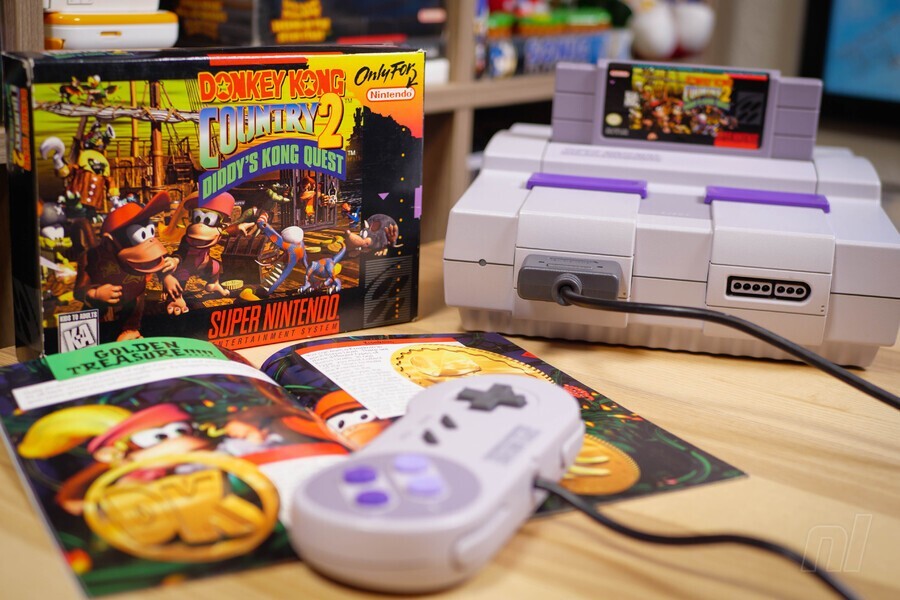
With bigger teams to manage, more powerful hardware to develop for, and higher expectations to meet, video games are bloody expensive. Not only to produce, but to buy. Super Mario Odyssey gave Mario a new gimmick in Cappy, tons of incredible worlds, more collectability than ever before, and a huge facelift for his debut on Switch. And if people wanted a new 3D Mario on Switch (besides the excellent Bowser’s Fury stopgap), Mario Odyssey 2 is likely what it would (will?) be. Of course Nintendo would use some of the assets and build on what made Odyssey great, right?
We’ll likely be waiting until the next console for more 3D Mario, Odyssey 2 or not, and it’ll be something a bit different, though not wildly different.
Masking the Galaxy
Two of Nintendo’s best sequels ever are iterative of their predecessors — Majora’s Mask and Super Mario Galaxy 2.
Majora’s Mask, admittedly, changes up a fair amount from Ocarina of Time — the mask mechanic is brand new, the overworld is entirely new, the timer is a stressful new addition, etc. — but it uses a lot of the same monsters, mechanics, and weapons from Ocarina of Time.
Remixing and condensing Ocarina of Time’s elements down in Termina — an unfamiliar yet uncanny world — and Clock Town is, actually, pure genius. You’re already familiar with Hyrule, but now you get to become intimate with the residents of the town, help them out, and learn about their intricacies, their patterns, and their movements. Putting you back in Young Link’s shoes strips a little bit of that power away from you, the Hero of Time who saved the world just a few months earlier. And the tone of Majora’s Mask takes some of the more unsettling parts of Ocarina of Time — The Forest Temple, Shadow Temple, Re-Deads, Likelikes, etc. — and ramps it up to 11. It’s one of the best ‘straight’ sequels out there.
Super Mario Galaxy 2 takes this to the extreme — it is “just” more Super Mario Galaxyand a much more textbook follow-up. The gameplay has been refined, Yoshi has been added, and there are more galaxies with more varied layouts, but essentially, this is more of the same, with more challenges to tackle and Green Star quests.
But darn it, if more of the same means more perfect galaxy-hopping gameplay, then I want all of it. Saying that Mario Galaxy 2 is just “DLC” for Galaxy is baffling. It’s a whole new game and more than worth the price of admission. Super Mario Galaxy has a different hub world and a deeper (though optional) focus on story, but by just adding Yoshi and a few new power-ups in Mario Galaxy 2, the possibilities and potential for new puzzles and challenges are blown open. Yoshi in space is a dream concept anyway, how could anyone be upset about that?
A new lick of ink
Splatoon is a radically unique series in Nintendo’s library. Splatoon 2 took everything that made the first great, popped it on better hardware, and really fine-tuned the experience. Five years later, Splatoon 3 did the same thing but on the very same hardware. That’s oversimplifying it a little bit, but it stands out because it’s a follow-up to a Switch game on the Switch that is very much ‘merely’ iterative of what came before it.
But Splatoon 3 has loads of new stuff — new weapons, stages, characters, all the stuff we’ve talked about, and a bit of a different musical vibe thanks to Deep Cut. And it falls into a different genre than a lot of Nintendo’s other series. Pikmin and Pikmin 2 on GameCube (and Pikmin 3to be fair) also aren’t radically different from one another — one has a timer when the other doesn’t, and 2 has brand new Pikmin species and enemies to contend with, for instance — but this unique RTS series has a core that, if it were to change too much, like with Splatoon, it wouldn’t be Splatoon. The same can be said for fighting games and racing games — that’s perhaps why Smash Bros. and Mario Kart are typically only one-per-console jobs.
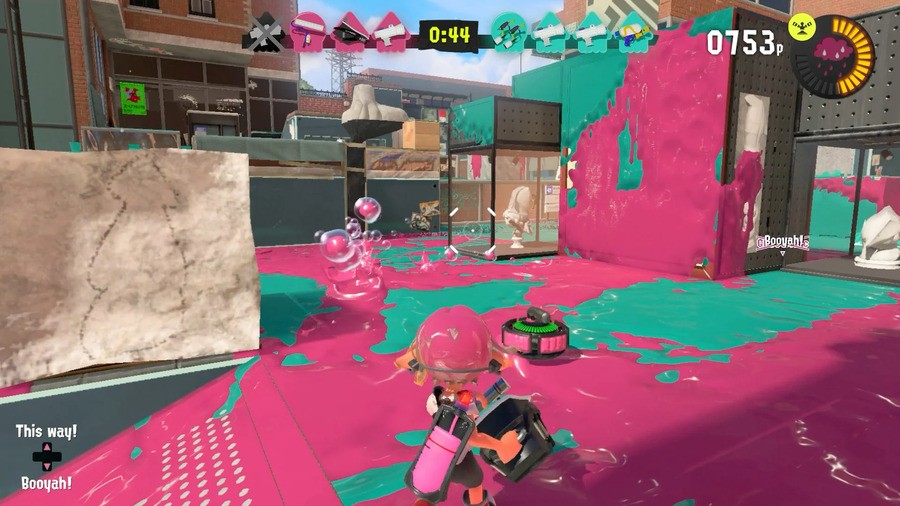
Tears for a sequel
The longer wait time between sequels, the increased development cost, consumer cost, and the need to patch or update a game after launch might make a non-tea-table-upending sequel a bitter pill to swallow for some. A brand new 3D Zelda game is an incredibly exciting prospect, but when you’re following it up — and on the same console — where do you go?
Breath of the Wild is the best-selling Zelda game of all time — and it’s not even close. It’s generally considered one of the best video games ever made. The same happened with Ocarina of Time, and Nintendo recognised that and made an ‘iterative’ sequel. Tears of the Kingdom looks to be following the Majora’s Mask template to a degree, changing up enough things to keep it fresh as well as altering the tone and the mood, at least from the look of the trailers. Hyrule looks familiar, but it’s also pretty different with all of that verticality and those Sky Islands.
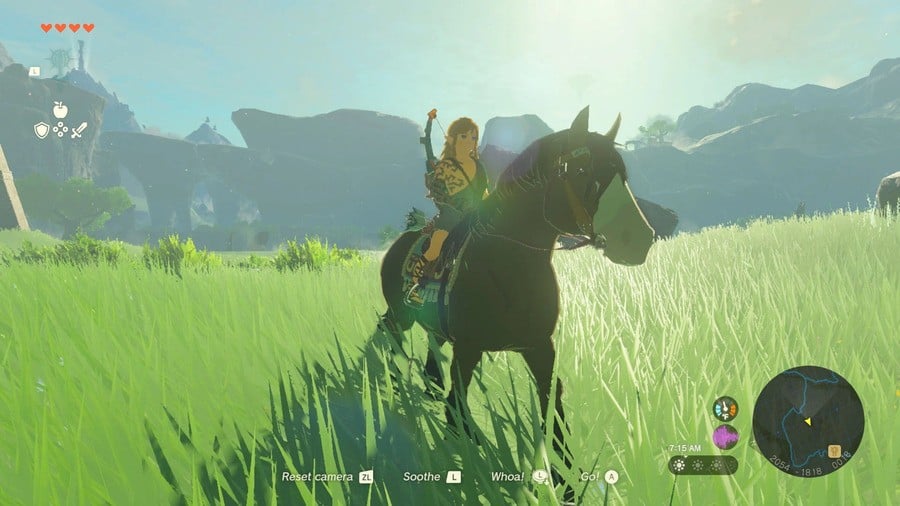
Breath of the Wild captured something magical, so of course Nintendo wants to build upon that. Not every single Zelda game going forward will be “another Breath of the Wild”, but from what we’ve seen so far, it looks like Tears of the Kingdom is that, to a degree. Iteration is hugely important in video games, no matter if it’s using the same formulas or taking big parts of previous games and just tweaking up the mechanics. The space for innovation isn’t going anywhere, and very soon we’ll be returning to a familiar kingdom with new tools that offer a fresh, thrilling perspective on places we thought we knew. What could be more ‘Zelda’ than that?
And I can make a super long spear with a rake and a large stick now, so Moblins beware.
Note: This article have been indexed to our site. We do not claim legitimacy, ownership or copyright of any of the content above. To see the article at original source Click Here

.jpg)







